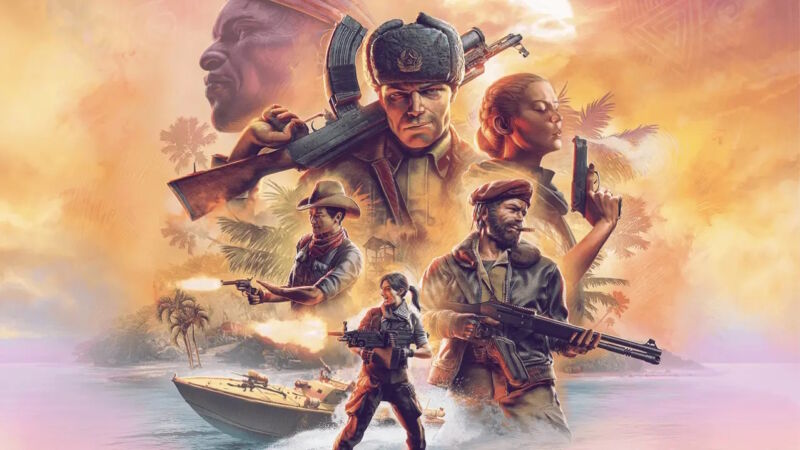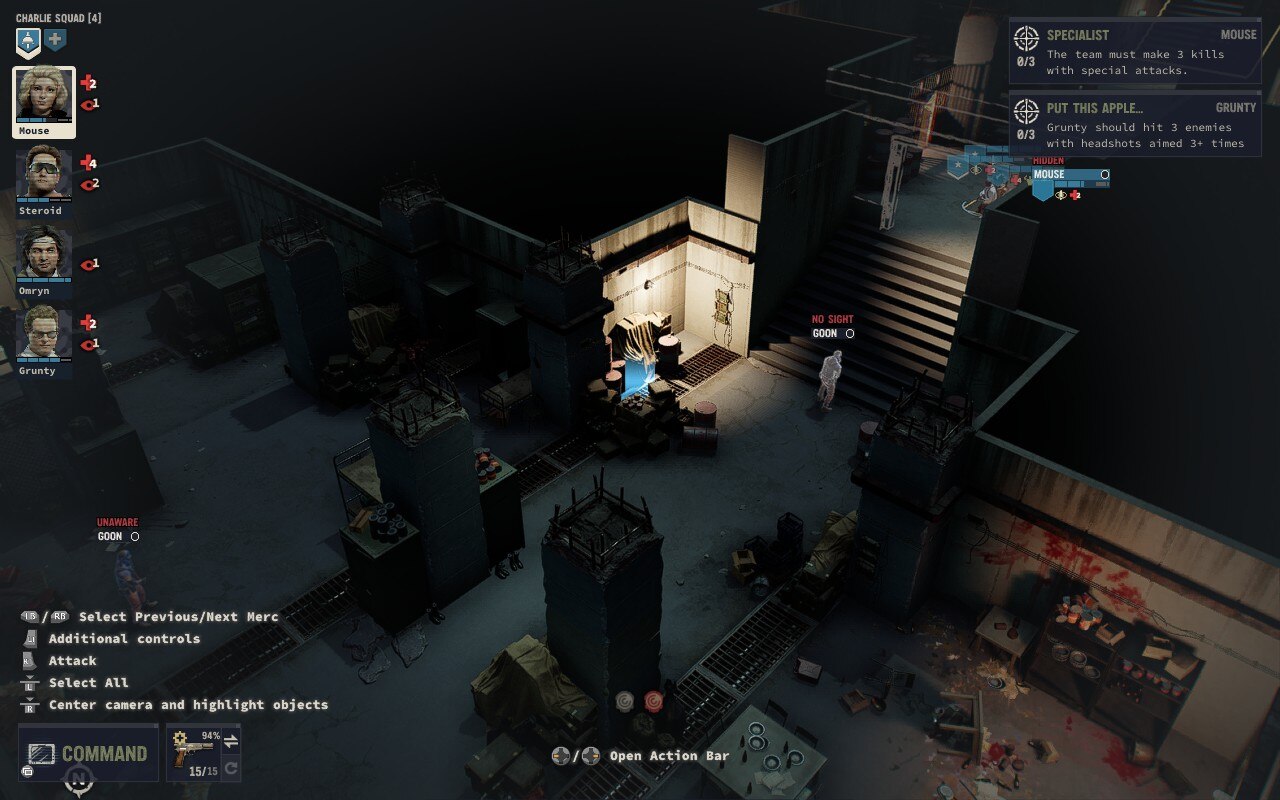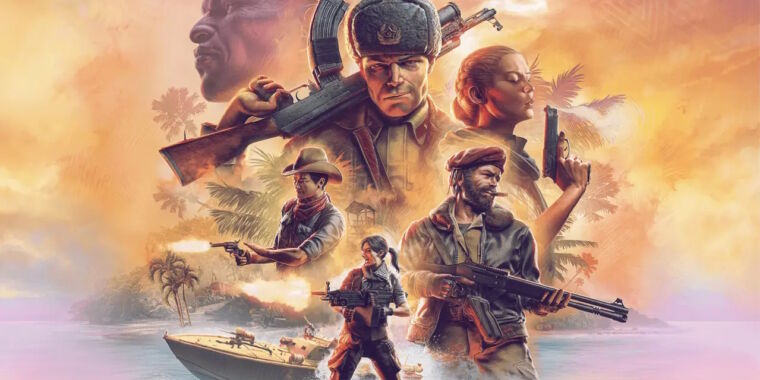
THQ Nordic
The first Jagged Alliance game was published nine months after X-COM: UFO Defense, despite being developed at nearly the same time, in the same genre, with neither knowing about the other. X-COM took the throne as the progenitor of turn-based tactics games. Jagged Alliance sold okay and became a minor cult classic but is not mentioned in even a fraction of as many histories or ranked lists.
Jagged Alliance 2 was a richer, cruder, funnier, far better game. The sequel more fully meshed ’80s action movie tropes and stereotypes with the peculiar fun of micromanaging a jungle gunfight, while also managing a cast of real characters. Like Soldier of Fortune magazine, or dozens of VHS box covers from the “Action” section, it’s only realistic at a glance. As Darius Kazemi puts it in his wonderful book on the game: “No matter what a war-themed video game claims to do, it inevitably simulates the cultural fantasy of war and never war itself.”
Like its predecessor, Jagged Alliance 2 had exponentially more developer cred than sales. It racked up editors’ awards and high review scores, but its most notable nod was a nomination for “Best Game Nobody Played” in 1999. Nobody expected a true sequel 24 years later. But here we are, with a Jagged Alliance 3 that feels very direct in its sequel-dom.
I played each Jagged Alliance title many, many times but skipped the semi-sequels that, to a devotee, didn’t look right, even at a glance. Now, 24 years later, I am playing Jagged Alliance 3 and having the same problem my teenage self had. I keep thinking about new ways to ambush my enemies instead of dealing with the things adults want me to do.
Release trailer for Jagged Alliance 3. Skip ahead a bit to see the non-cutscene gameplay.
Ridiculous lines
My first hired mercenary’s name is Steroid, and—wouldn’t you know it—he’s a big, dumb guy obsessed with fitness and performative masculinity. If I command him to get into “Sneak” mode, he responds, sounding like a fifth-rate Arnold Schwarzenegger impersonator, “It is a shame that they won’t see my magnificent physique!”
The game tells you, in a disclaimer on first loading, that this is how it is. The original games “poked fun at cliches and stereotypes” in action movies, and JA3 “continues in this tradition, but also takes jabs at contemporary issues and pop culture.” In other words, it is knowingly full of cheesy, brusque shorthand from an earlier era of entertainment. You’re liberating a tropical-climate country whose residents are largely people of color. From some brief Internet searches, I’ve seen certain communities embrace the high buffoonery while others celebrate all the wrong things.
It’s a strange look, acknowledging the ridiculousness of a game’s premise right from the start, but it’s probably the best angle here. Given how large JA3‘s roster and world map are, the characters, both playable and NPC, almost have to be sketches, however crude. There are some sincere shots at drama and surprising character moments with top-notch voice acting. For the most part, though, it’s a lark, and necessarily so. The story provides some side quests and a general sense of thrust, but JA3 is lived moment by moment, turn by turn, shot by shot.

Underground areas give you fewer cover spots, more opportunities for bottlenecking enemies, and a chance to find out that certain mercs are claustrophobic.
THQ Nordic

